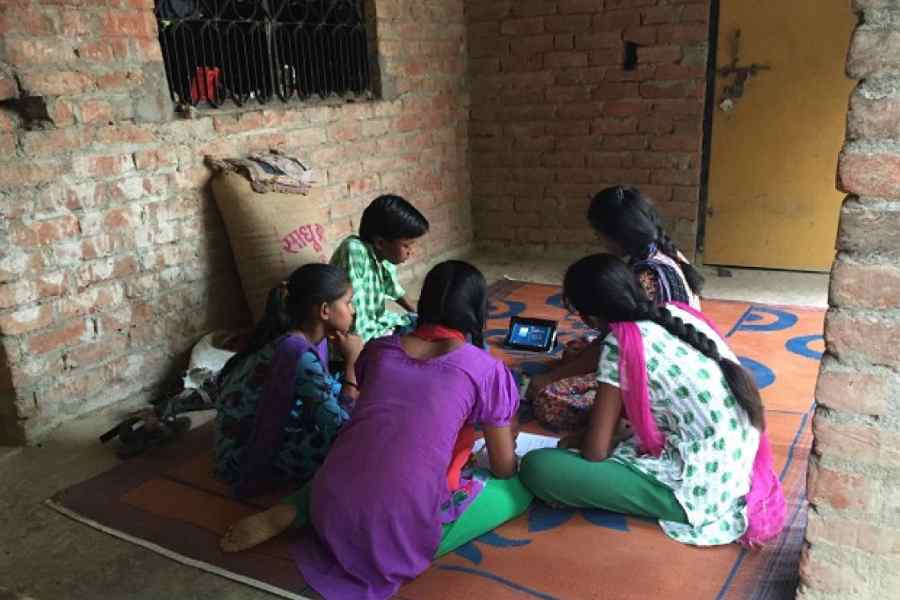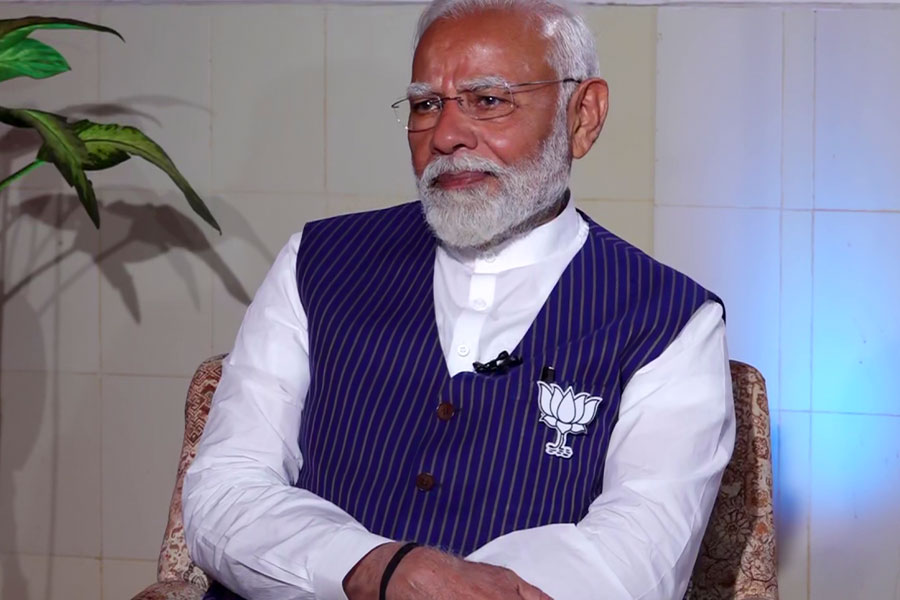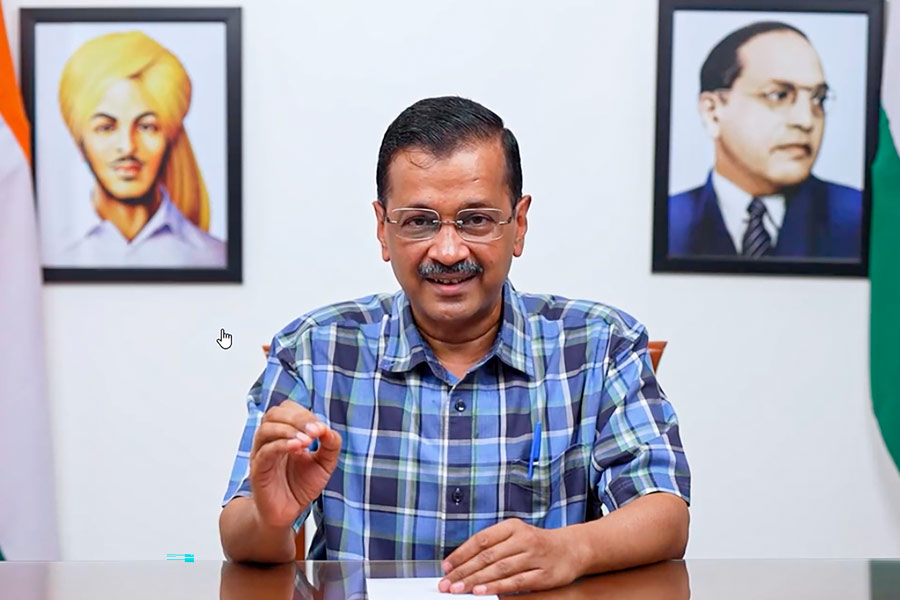Powerful interests want to persuade us that the solution to our educational problems is ‘just a click away’. But for the fossilised conservatives holding back our schools and universities, they argue, technology would deliver open learning for all. In this digital wonderland, the smartphone would bring opportunity for educational advancement within the grasp of every slum child or rural youth.
We have heard variants of this story for decades. In the late-20th century, television had its cheerleaders keen to portray the dreaded box as a tool of democratised learning. A quarter of a century ago, Sugata Mitra gained publicity for the notion that the educational disadvantages of street children could be tackled through ‘Hole in the Wall Computers’.
Today, organisations such as Pratham argue that smartphones can succeed where Mitra’s bulkier microchips had failed. In a mid-January media blitz, Pratham’s Madhav Chavan contended that “free smartphones with internet access” would help resolve the educational disadvantages of rural girls and other underprivileged learners.
Chavan is not alone. The gospel of educational technology attracts influential adherents amongst policymaking elites and think-tankers in India and beyond. Unesco’s Mahatma Gandhi Institute of Education for Peace and Sustainable Development in New Delhi promotes enhanced use of digital technology and Artificial Intelligence as a means of delivering ‘personalised’ learning and assessment. In MGIEP’s vision, smartphones are just one weapon in a data-driven, algorithmically-enhanced armoury that promises to transform education for the better.
What is wrong with all this? Smartphones, computers and tablets are part of our 21st-century world. We cannot wish them away. They will have a place, for better or worse, in our educational experience and everyday lives. So why not embrace the inevitable?
There are, in fact, good reasons for resisting ‘technological solutionism’ in education. These fall into several inter-related categories: practical, ethical and political. Let’s consider them in that order.
First, the chaos brought by the pandemic in the educational sector highlighted serious practical limitations of online teaching and learning. Relying on smartphones or other digital devices to deliver class lectures requires children to possess these gadgets in the first place. In India, many still do not. Hence Chavan’s proposal to distribute “free smartphones with internet access”. Problem solved!
Or is it?
The use of screens to channel identical data to disparate users does not make learning opportunities equal. The obvious hitch — it is often overlooked — is that effective home learning depends on conditions within the home. There is a world of difference between accessing online instruction via a desktop computer in a quiet Mumbai penthouse and squinting at a smartphone in a one-room hut amongst squabbling siblings and squawking chickens.
Problems with online learning arose during the pandemic not just because of the poor roll-out of internet-connected screens. Amidst prolonged school closures, even those children who possessed the necessary technology became disengaged from online classes. Nor is it clear how more smartphones would have stemmed the surge in early marriages and other gender-related problems that stunted the education of many girls during the Covid-19 emergency. As we survey the educational wreckage of the pandemic, should we then conclude that the solution lies in greater investment in digital technology?
The answer to that question depends on ethical as well as practical considerations. In other words, our choice of educational tools or methods always reflects assumptions about the fundamental purposes of education. Is it primarily about inculcating ‘skills’ such as literacy and numeracy that are needed to compete successfully for jobs or credentials? Or is it also, and crucially, a means of socialisation — that is, providing young people with a sense of belonging, identity and the understanding of what it means to be a citizen?
Digital devices may appear to be efficient in teaching ‘skills’ (although the evidence for this is weak), but as instruments of socialisation they can be outright dangerous. Social media notoriously turbocharges the creation of the kind of exclusionary friendship groups that young adolescents tend to form. The result is the phenomenon of ‘cyberbullying’, particularly serious amongst adolescent girls. Indeed, awareness of such problems, as well as justified concerns about the psychological and physical consequences of excessive ‘screen time’, preoccupies many parents today.
In Japan, where I live, a strong emphasis on education’s socialising function helps explain suspicion of online learning, at least during the compulsory schooling phase. During the pandemic, policymakers in many countries were quick to close schools and resort to online instruction. But in Japan, schools re-opened as soon as mask protocols were in place and then stayed open. Pandemic-related school closures in Japan, at around five weeks in the spring of 2020, were shorter than anywhere else in the world.
The resilience of Japan’s schooling system in the face of Covid-19 reflected political as well as ethical priorities. A strong consensus here supports educational equality underpinned by standardized, public provision. There is no school choice in the public system: all children must attend their local school. Insistence on standardised, local provision also means that for most children school is close to their homes. Indeed, most walk to school. Keeping Japan’s schools open through the pandemic was therefore easier than in more diverse and unequal systems where schools are more dispersed and less accessible.
The contrast with India is stark. Far from reflecting a public commitment to equal, standardised provision of education, the Indian system is riven with inequalities. The promise of decent, publicly-funded schooling for all is withheld from innumerable citizens. Elites, who mostly educate their own children privately, withhold support for State schooling, touting low-cost private schools for the poor instead. This is a flawed approach that was brutally exposed by the pandemic when many such schools went bust.
We should judge portrayals of digital technology as an educational panacea in this context. The corporate and political elites want us to believe that social justice can be met with the click of a mouse. They seek to persuade us that there are easy ways of expanding educational access that neither threaten the privileges of the wealthy nor require them to pay more tax.
But we should see this for the snake oil that it is. Online learning cannot compensate for the loss of company of other children, or the guidance of a caring and professional teacher, in the decent surroundings of a well-equipped school. No society has ever built a system that meets those conditions except through properly-funded, reasonably equitable State provision.
Edward Vickers holds the Unesco Chair on Education for Peace, Social Justice and Global Citizenship at Kyushu University, Japan










